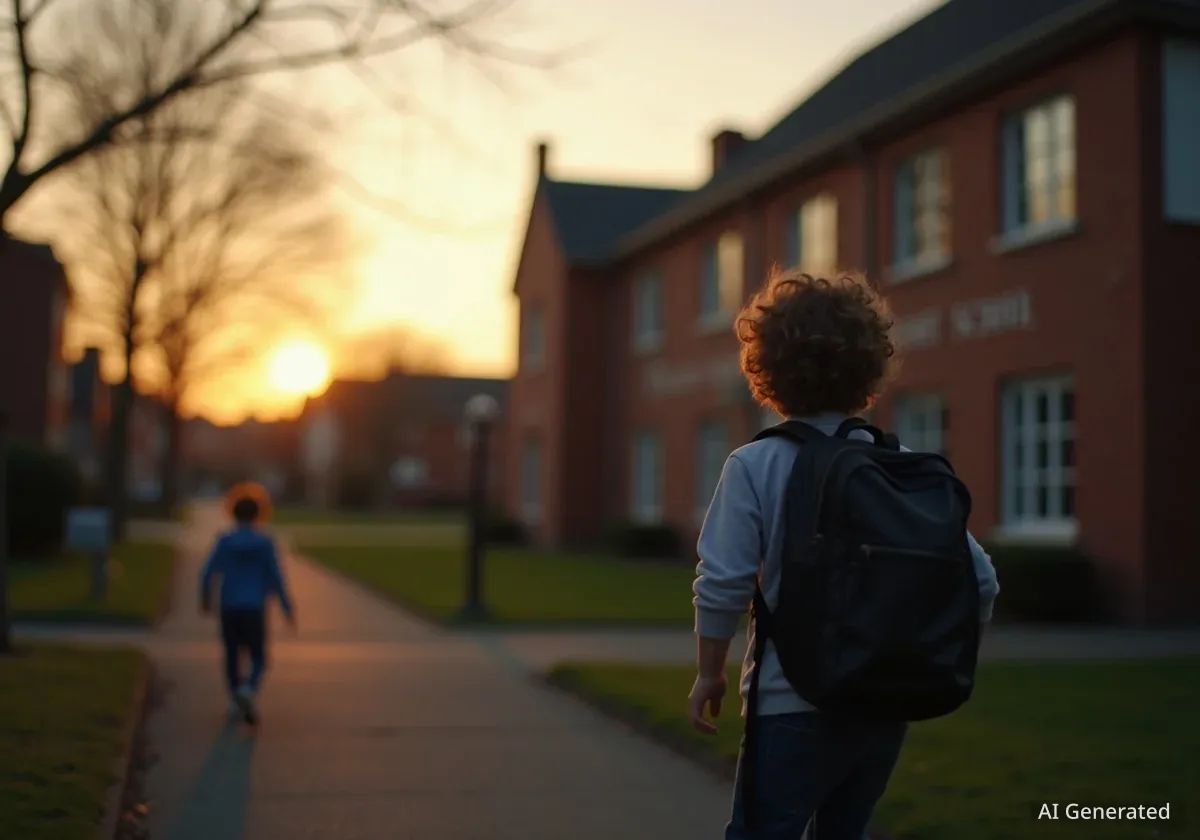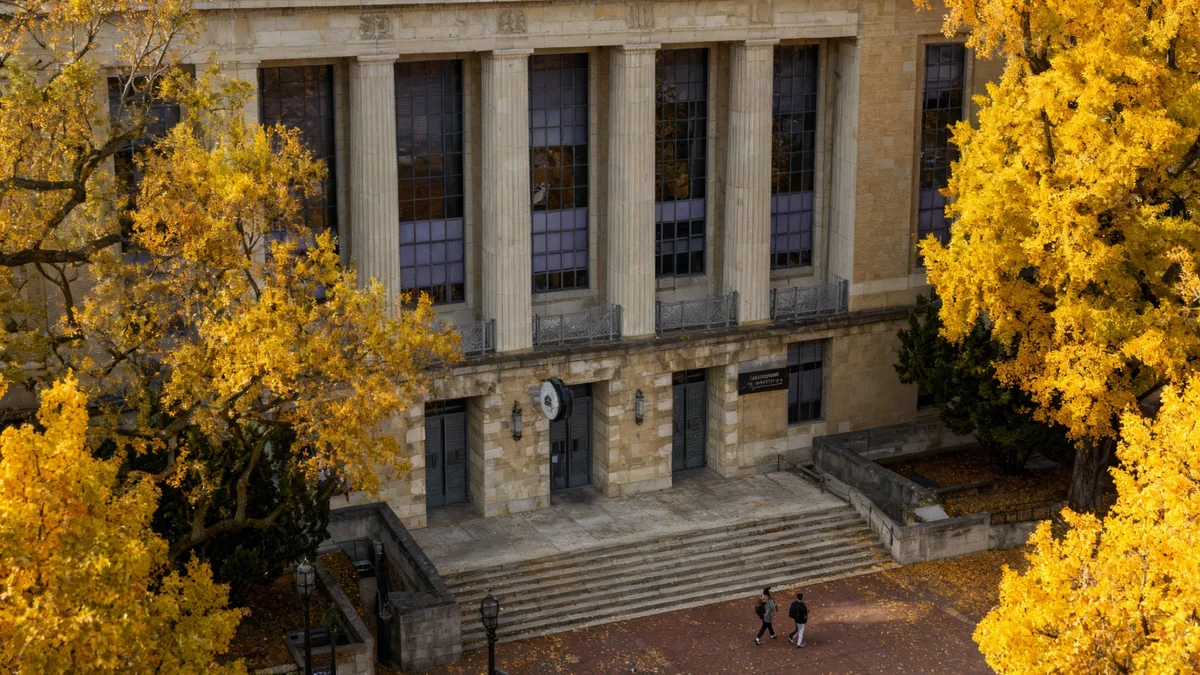For three decades, New Hampshire has grappled with a public school funding system ruled unconstitutional by its Supreme Court. The state's heavy reliance on local property taxes creates significant disparities in both educational opportunities for students and tax burdens for property owners, a challenge that remains a central issue in the State House.
Legislative proposals for the upcoming session continue to address the long-standing problem, but a comprehensive solution has yet to gain consensus. The core of the issue lies in court mandates that require the state to provide and fund an adequate education for every child through a fair and proportional tax system.
Key Takeaways
- New Hampshire's school funding system has been a subject of legal and legislative debate for 30 years following the Claremont Supreme Court decisions.
- The state's contribution to education costs is approximately 22%, less than half the national average of 47%.
- Local property taxes account for about 70% of school funding, leading to vast differences in tax rates and educational resources across communities.
- Proposed solutions, including adjustments to the statewide property tax, face challenges in addressing the fundamental reliance on what critics call a regressive tax model.
A System Rooted in Local Property Taxes
The foundation of New Hampshire's education funding model is local property taxes. This approach has been the subject of persistent legal challenges. Thirty years ago, the New Hampshire Supreme Court issued two landmark rulings known as Claremont I and Claremont II.
The first decision, Claremont I, established that the state has a constitutional duty to ensure every child receives an adequate education and to provide the funding for it. The subsequent ruling, Claremont II, determined that the funding method itself was unconstitutional because it depended on a property tax that was not applied uniformly across the state.
Understanding Proportional and Reasonable Taxation
The New Hampshire Constitution requires that all state taxes be "proportional and reasonable." In the context of school funding, the Claremont II decision found that relying on widely varying local property tax rates to fulfill a state obligation did not meet this standard. This created a system where taxpayers in different towns paid vastly different rates for the same state-mandated service.
Despite these rulings, the funding structure has seen little fundamental change. The system's reliance on property taxes remains a central point of contention for lawmakers and residents alike.
The Financial Breakdown of School Funding
An analysis of New Hampshire's public education funding reveals a significant dependence on local revenue sources, a structure that differs sharply from national averages.
Funding by the Numbers
- Property Taxes (Total): Approximately 70% of all education costs.
- Local Property Taxes: About 61% of the total.
- Statewide Education Property Tax: Roughly 8% of the total.
- Other State Funding: A little over 22%.
- Federal Funding: Around 8.5%.
Note: Percentages may not total 100% due to other revenue sources like tuition, fees, and insurance settlements.
This distribution places New Hampshire well below the national average for state contributions to public education. According to national data, states typically contribute about 47% of education costs, more than double New Hampshire's share. This disparity forces local communities to bear a much heavier financial load.
Wide Gaps in Tax Rates
The over-reliance on local property values results in extreme variations in tax rates across the state. This creates an inequitable system for both students and taxpayers.
For example, property-wealthy communities like New Castle and Moultonborough have tax rates around $5 per $1,000 of property valuation. In contrast, property-poor communities such as Colebrook and Orford face rates approaching $35 per $1,000—seven times higher.
This means residents in some towns must pay significantly more in taxes to provide a basic level of education for their children compared to residents in wealthier towns, who often fund more extensive programs with a lower tax burden.
Legislative Proposals and Ongoing Challenges
As lawmakers prepare for the next legislative session, several bills aim to address the funding crisis, though most are viewed as incremental adjustments rather than comprehensive reforms.
One notable proposal comes from Rep. Walter Spilsbury, R-Charlestown. His plan suggests increasing the statewide education property tax rate to $5 per $1,000 of equalized valuation. The current rate for the 2025 tax year is $1.12 per $1,000.
Spilsbury's bill would generate over $1 billion for public education, providing approximately $10,000 per student. This is a significant increase from the current state aid of $4,266 per pupil. The plan includes exemptions and offsets designed to place most of the new tax burden on second homes and non-residential properties.
"His plan would be very helpful to property poor communities that should see a significant reduction in their property taxes, but residents in property wealthy communities would see a hefty increase in their property taxes," noted Garry Rayno, State House Bureau Chief for InDepthNH.org.
However, critics point out that even this proposal still relies on a property tax, which is often considered a regressive tax because it is not based on a person's income or ability to pay.
Broader Economic and Political Factors
The school funding debate does not exist in a vacuum. It is influenced by New Hampshire's broader tax structure and political landscape. The state does not have a general sales tax or a broad-based income tax, making property and business taxes the primary sources of revenue.
The recent repeal of the interest and dividends tax eliminated a mechanism for taxing individual wealth growth. Meanwhile, business profits are taxed at 7.5%, and the Business Enterprise Tax is assessed on compensation and dividends, regardless of a company's profitability.
Political dynamics also play a significant role. The influence of organizations advocating for limited government and no new taxes has shaped the legislative environment. Concurrently, programs like the Education Freedom Account (EFA) have redirected public funds. The EFA program has created an obligation of over $100 million on the Education Trust Fund, which could otherwise be used for public schools.
As the state continues to debate these issues, the fundamental challenge remains: finding a stable, equitable, and constitutional method to fund public education for all New Hampshire children.





